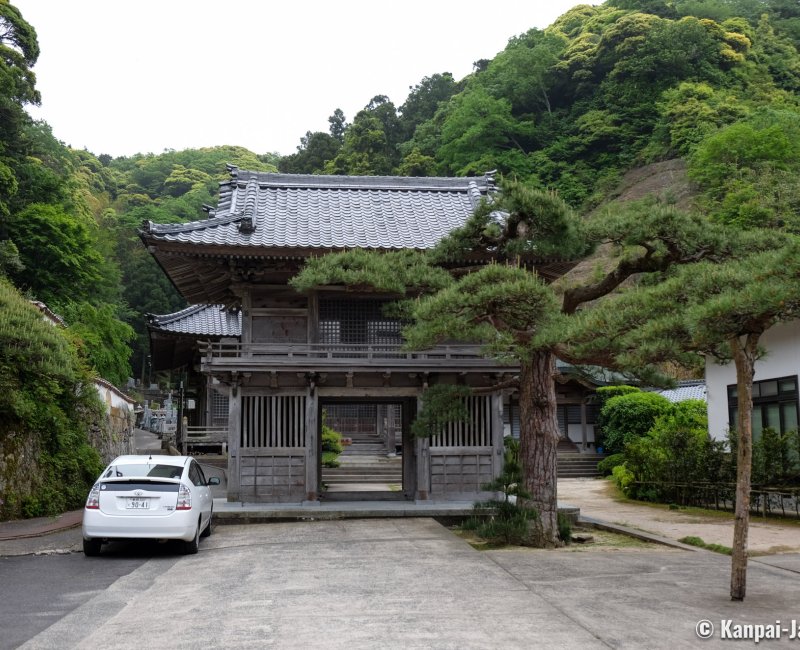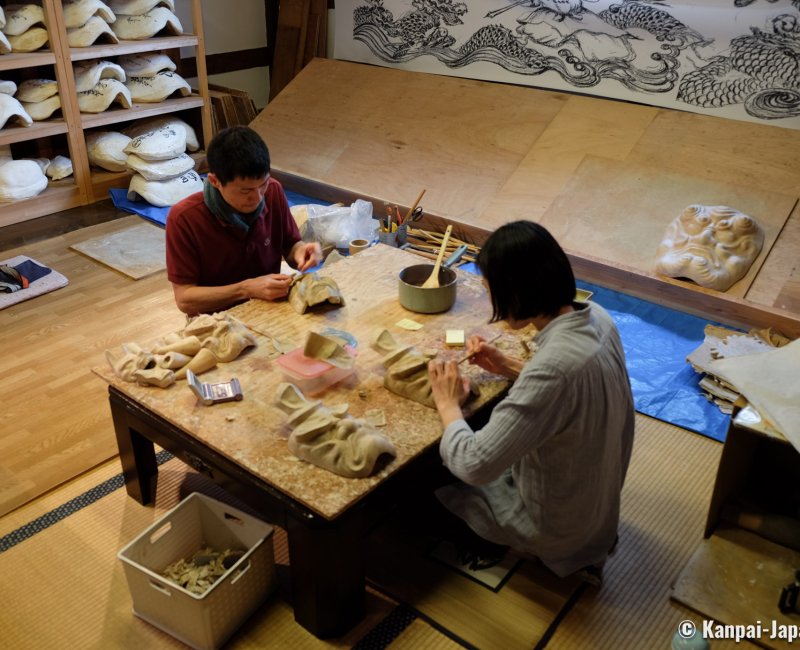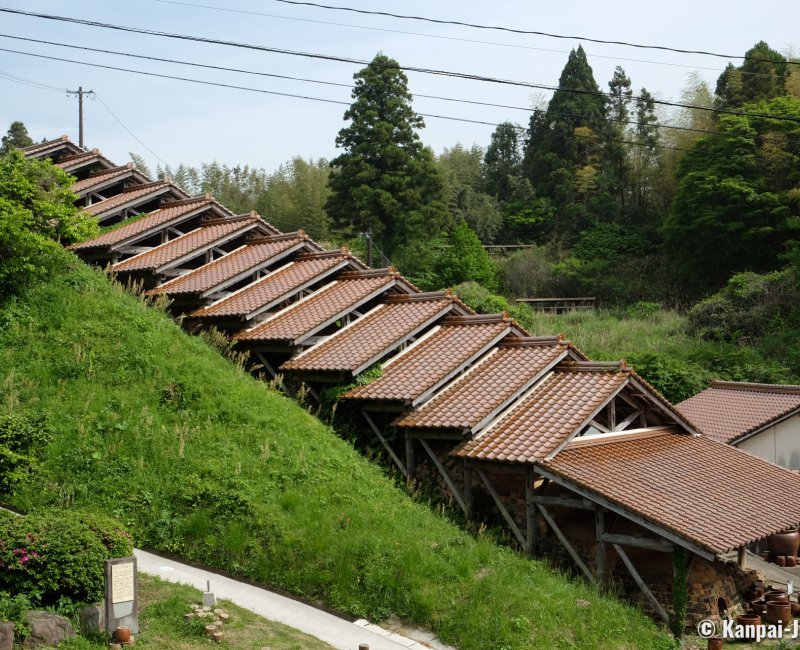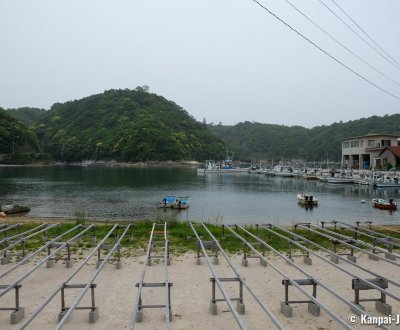Yunotsu
Port And Onsen Springs near Iwami Ginzan Mine
Yunotsu is a former port and thermal resort enlisted in the UNESCO World Heritage, located on the Sea of Japan, in Shimane prefecture, on Honshu Island. Stemming from the exploitation of Iwami Ginzan silver mine, the village has preserved traces of its rich past and is maintaining regional traditions such as the art of Iwami Kagura and artisanal pottery.
Nestled on the shore of a deep water cove on the Sea of Japan, Yunotsu port commercially thrived during the Edo period (1603 – 1868) as one of the main outlets of Iwami Ginzan silver mine, located 10 kilometers inland in the east. At the times, silver ore and various goods passed through Yunotsu, that was a port of call for the big kitamaebune ships sailing to the north of Japan. In the early 20th century, the advent of railway in the archipelago, then the closing of the mine, put an end to the once flourishing maritime trade.
Nowadays, boats are moored when they don’t set out to sea for fishing, and the port is imbued with the quietness of the Japanese countryside characteristic of Shimane prefecture. The village’s streets, lined with preserved traditional architecture, have retained the old-times ambiance and are enlisted in the UNESCO World Heritage since 2004, along with the site of Iwami Ginzan.

Visitors can also discover 2 Buddhist temples leaning onto a steep cliff:
- Eko-ji (恵珖寺), affiliated to the Nichiren sect, sheltering, among others, the grave of the 1rst administrator of the silver mine, as well as those of ancient merchants families; and,
- Sairaku-ji (西楽寺), belonging to the Jodo-Shinshu (True Pure Land School) since 1521. Its head-temple is Nishi Hongan-ji in Kyoto.
Aside this heritage, Yunotsu is also an onsen ♨️ village. Its volcanic ground has several natural hot springs that are still in business and exploited for their therapeutic properties. Spa amateurs stay in one of the city’s ryokan inns and enjoy the 2 public baths, of which Motoyu is the most traditional. The spring 🌸 water is naturally very hot and its temperature exceeds 45°C, some of the pools are cooled down to 42°C.
The village is also home to a skilled local craftsmanship, specialized in the production of house earthenware and the making of regional kagura masks.

Tradition of the Iwami Kagura ritual dance
The former Iwami province, now in the west of Shimane prefecture, has developed a specific Kagura. This ritual dance, performed by the miko priestesses for the Shinto kami deities, is characterized by enhanced theatrical aspects in this part of Japan. It is a true artistic performance, colorful and dynamic, with performers completely hidden in costumes and behind very expressive decorative masks.
Iwami Kagura performances, deeply connected to the archipelago’s Shinto myths and legends, are renowned throughout Japan thanks to the region’s inhabitants who are maintaining this tradition alive on an every day basis. In Yunotsu, Tatsu-no-Gozen-jinja (龍御前神社) shrine is holding a weekly dance performance, every Saturday night, around 8 p.m.
On the daytime, the Kobayashi Kobo studio displays its traditional craftsmanship of Iwami Kagura masks making. These masks are made with several layers of washi sekishu paper, so they are strong enough so as not to deform, and light enough for wearing. Its takes from 1 month and a half to 2 months to make 1 mask 😷, depending on the temperature and the ambient humidity; ideally the room temperature should be between 15°C and 25°C and the humidity rate about 50% to 60%. Masks are available to purchase as a souvenir at the workshop’s exhibition gallery.

Yakimono no sato potters’ village
Growing with Yunotsu’s trading port activities during the Edo period, the town’s artisans started to make yakimono earthenware. More precisely, they specialized in the making of crockery and crock pots called hando, that were convenient for ship transport and food preservation.
Several large ascending kilns (noborigama) with multiple fire 🔥 chambers spreading like dragons on the hills were built in the village for production purpose. There are still 3 pottery workshops in Yunotsu and 2 preserved ascending kilns that are operated on a regular basis. When potteries are fired, black smoke from pine tree wood burning ascends to the sky.
Yunotsu’s Yakimono Matsuri festival takes place every year, in April for spring and in October for autumn 🍁. At these events, you’ll see a lot of potteries and artisanal ceramics displayed by their creators. It is possible to purchase ceramic goods, or to make them in an experience workshop. Throughout the year, a small museum dedicated to Yunotsu earthenware welcomes the public since 1990.

Near Yunotsu, the discovery can extend to the ports of Okidomari and Tomogaura, that were also part of Iwami Ginzan silver ore’s exportation trade network.

